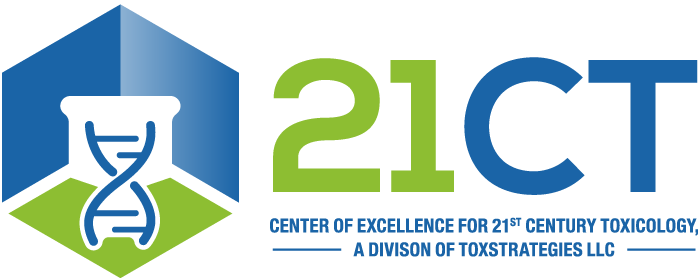2025
Gauthier A, Behymer W, Bare J, Kramer M, Barranco WT, Longtin JP, Borghoff S , Jaques A. 2025. Measurement of vinyl acetate monomer in consumer products and modeled estimates of consumer exposure. J Exp Sci Environ Epidemiol; doi: 10.1038/s41370-025-00786- y. Online ahead of print June 18, 2025. PMID: 40533479.
View Abstract
Topics: consumer products , Exposure Assessment , vinyl acetate
Brorby G, Franzen A, Thompson C, Wikoff D, Doepker C. 2025. Human health risk assessment of three smoke flavoring primary products. Food Chem Toxicol 202(Aug):115490; doi: 10.1016/j.fct.2025.115490 . PMID: 40320068.
View Abstract
Topics: flavorings , food safety , Food science , genotoxicity , risk assessment , safety , Toxicology
Allen BC, Vincent MJ, Lipworth L, Panko JM, Suh M , Jiang X, Mumma MT, Proctor DM. 2025. Lung cancer risk assessment associated with exposure to hexavalent chromium: Results of pooled analysis of three cohorts. J Occup Environ Hyg; doi: 10.1080/15459624.2025.2502491 . Online ahead of print May 28, 2025. PMID: 40435461.
View Abstract
Topics: Cancer , chromium , Exposure Assessment , Hexavalent Chromium , risk assessment
Diemar MG, Giusti A, Michel-Caillet C, Leme DM, Wikoff D , Bloch D, Sass J, Beekmann K, et al. 2025. How to organize a successful toxicology workshop? A participant perspective on the Collaboration to Harmonise the Assessment of Next Generation Evidence (CHANGE) workshop in Oslo, 18-20 June 2024. Arch Toxicol 99(7):3057-3063 ; doi : 10.1007/s00204-025-04064-6 . PMID: 40372420.
View Abstract
Topics: chemical safety assessment , NAMs , regulations , risk assessment , safety , science policy , Toxicology
Crincoli CM, van de Ligt JLG, Eapen AK. Pavel AT, Hanlon PR, Almond-Abbate K, Haugabrooks E,… Henderson RG . 2025. A tool to support food substance safety evaluations in the United States. Regul Toxicol Pharmacol 161(Sept):105838; doi: 10.1016/j.yrtph.2025.105838 . PMID: 40324559.
View Abstract
Topics: food additives , food safety , Food science , GRAS , ingredient safety , risk assessment
Rogers JM, Heintz MM , Haws LC. 2025. Reproductive and developmental toxicity screen (OECD TG 421) and extended one generation reproductive toxicity study (OECD TG 443) of decahydronaphthalene in Sprague Dawley rats. Regul Toxicol Pharmacol 160(Aug):105829; doi: 10.1016/j.yrtph.2025.105829 . PMID: 40222475.
View Abstract
Topics: adrenal hypertrophy , Decahydronaphthalene , industrial solvents , Toxicology
Heintz MM , Buerger AN, Haws LC, Cullen JM, East AW, Thompson CM . 2025. Comparison of phenotypic and transcriptomic profiles between HFPO-DA and prototypical PPARα , PPARγ , and cytotoxic agents in wild-type and Pparα -null mouse livers. Toxicol Sci 206(1):183-201; doi: 10.1093/toxsci/kfaf049 . PMID: 40216583.
View Abstract
Topics: mode of action , Toxicology , transcriptomics
Wikoff DS, Vincent MJ, Heintz MM , Pastula ST, Reichert H, Klaren WD , Haws LC. 2025. Application of a quantitative uncertainty assessment to develop ranges of plausible toxicity values when using observational data in risk assessment: A case study examining associations between PFOA and PFOS exposures and vaccine response. Toxicol Sci 204(1):96-115; doi: 10.1093/toxsci/kfae152 . PMID: 39792025.
View Abstract
Topics: PFAS , risk assessment , Systematic Review , Toxicology
Lea IA , Feifarek D, Mihalchik A, Heintz M , Haws L, Nyambego H, Goyak K, Palermo C, Borghoff SJ . 2025. Evaluation of the endocrine disrupting potential of Di-isodecyl phthalate. Curr Res Toxicol 8:100221; doi: 10.1016/j.crtox.2025.100221 . PMID: 40041033.
View Abstract
Topics: phthalates
Borghoff SJ, Rivera B, Fitch S, Buerger AN, Choksi N, Franzen A, Vincent MJ, Covington T, Bus J, Rushton E, Lea IA . 2025. Systematic evaluation of the evidence base on methyl tert -butyl ether supporting a lack of concern for carcinogenic hazard in human based on animal cancer studies and mechanistic data. Curr Res Toxicol 8:100224; doi: 10.1016/j.crtox.2025.100224 . PMID: 40084233.
View Abstract
